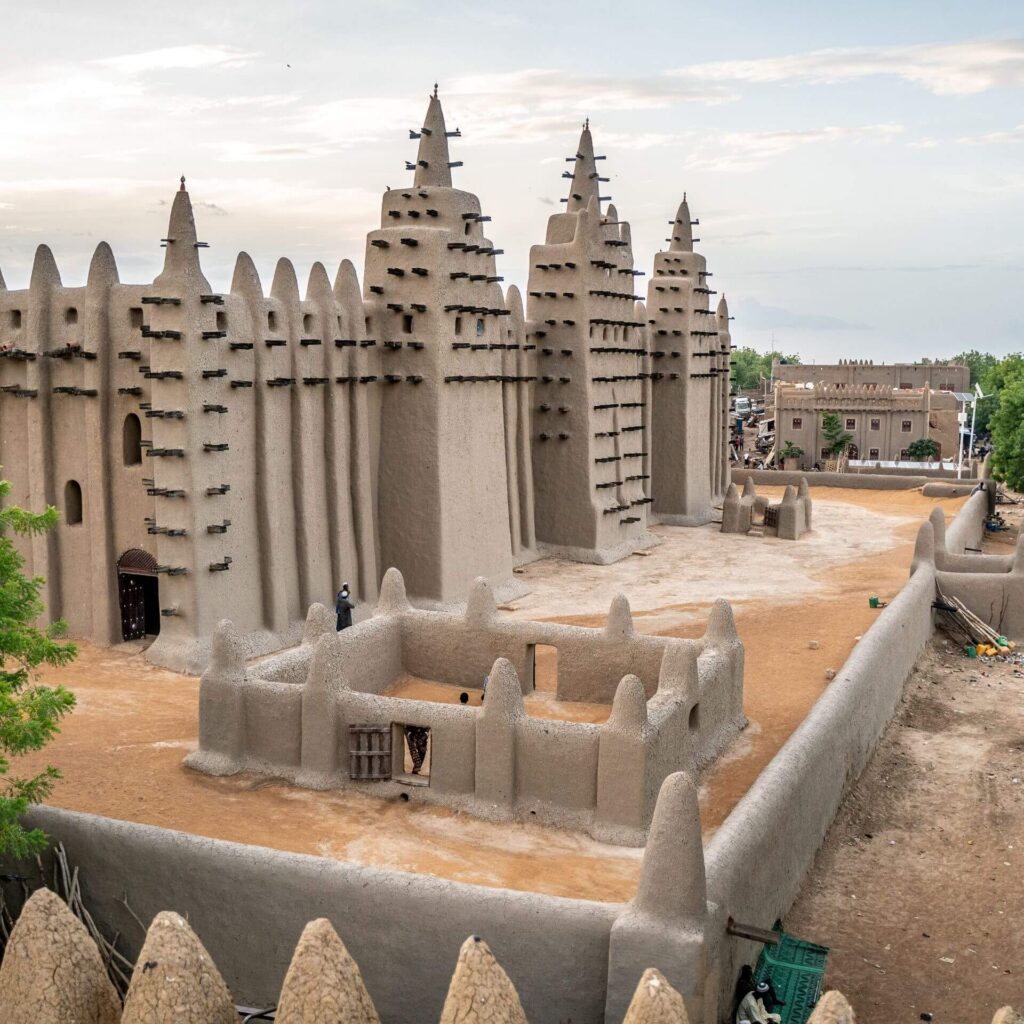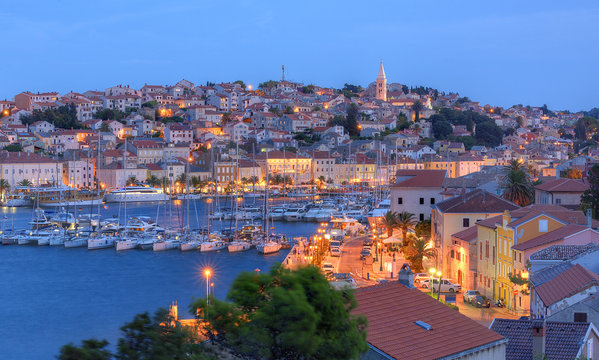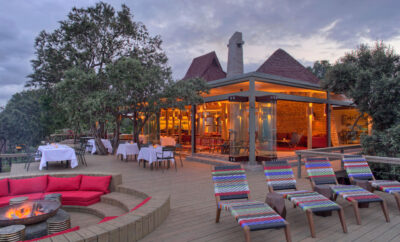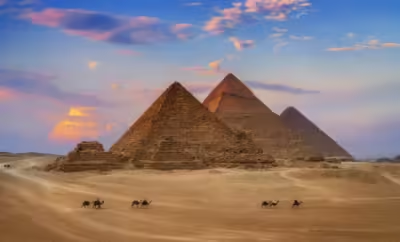Exploring Djenné: A Hidden Gem in Mali’s Heartland
Nestled along the floodplains of the Bani River, Djenné stands as a beacon of historical and cultural richness in Mali. With its roots stretching back to around 250 B.C., Djenné is not only one of the oldest known cities in sub-Saharan Africa but also a UNESCO World Heritage site that captivates visitors with its unique adobe architecture and vibrant cultural tapestry.
The Architectural Marvel of Djenné
At the heart of Djenné’s allure is the Great Mosque, renowned as the largest mud-brick building in the world. Constructed in 1907, this architectural masterpiece epitomizes the Sudano-Sahelian architectural style, characterized by wooden beams jutting out, which serve as structural supports and scaffolding for annual replastering. This event, known locally as the “Creppisage,” is a significant cultural and community activity that sees the townspeople come together to repair and maintain the mosque—a ritual reinforcing the community spirit.
Beyond the mosque, the entire town reflects the same earthen construction technique, offering a visual cohesion and aesthetic distinct to this part of the world. Visitors walk through Djenné to admire numerous two-story houses with ornate wooden doors and beautifully decorated facades, providing an unparalleled glimpse into West African history and design.

Market Days in Djenné
No visit to Djenné would be complete without experiencing its bustling market. Held every Monday, Djenné’s market transforms the town square before the Great Mosque into a lively trade hub. Here, tourists can mingle with locals, experience authentic Malian culture, and find everything from fresh produce and spices to handmade crafts and jewelry. The market is not just a place for economic exchange but a vibrant spectacle of color and tradition, reflecting the diverse ethnic makeup of the region, including Fulani, Bambara, and Moor traders.
Cultural Riches and Local Crafts
Djenné is also famous for its intricate mud-cloth, or ‘Bogolan,’ textiles. These are made using an age-old technique that involves fermenting mud to produce a black pigment, which is then used to paint traditional designs on cloth. The art of Bogolan is deeply intertwined with local customs and folklore, making these textiles highly sought after, not just as garments but as art pieces.
Visitors to Djenné can explore workshops and meet with artisans who are more than willing to share their knowledge and maybe even teach mud-cloth-making basics. Such interactions provide a deeper understanding of the local culture and the significance of preserving these ancient techniques.
Travel Tips
Visiting Djenné is best planned for the dry season from November to February when the weather is more relaxed, and the roads are more navigable. While Mali may present challenges in terms of travel logistics, mainly due to its remote location and the need for cautious travel advisories, the rewards of such an adventure are immense.
Tourists are encouraged to respect local customs and dress modestly. Engaging with local guides enriches the experience, contributes to the local economy, and helps in cultural exchange. It is advisable to check the latest travel advisories and health tips before planning your visit.
Conclusion
Djenné offers an exceptional insight into Mali’s ancient history and vibrant cultural heritage. It stands as a testament to the resilience and creativity of the Malian people. For those looking to step off the beaten path and explore a place rich in tradition and beauty, Djenné is a destination that promises an unforgettable journey.



